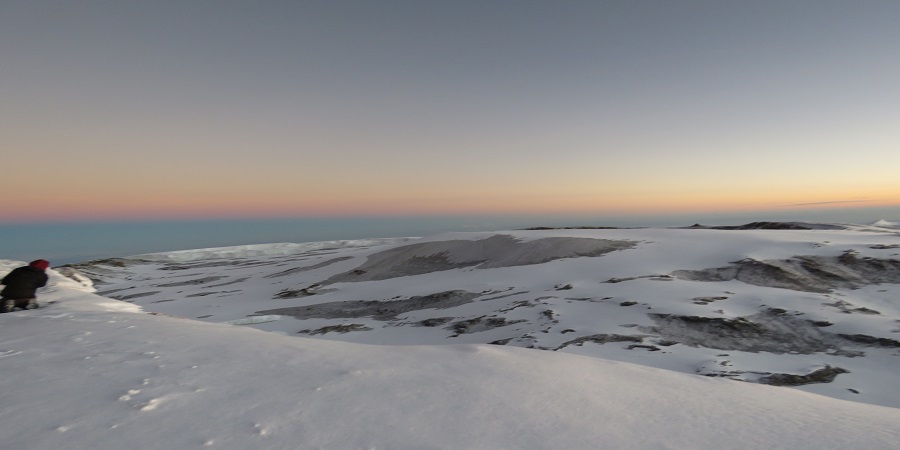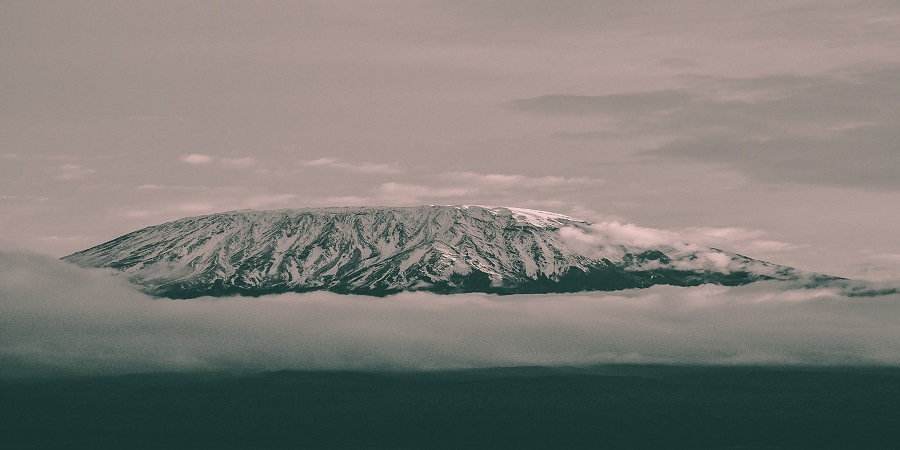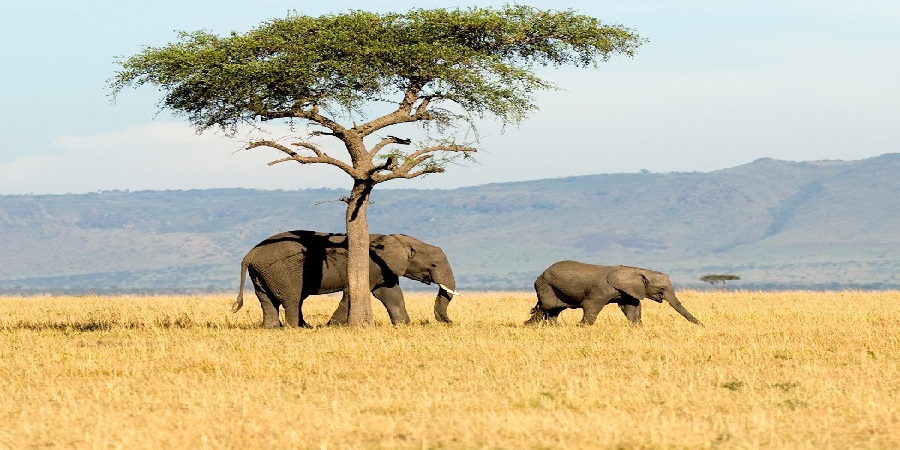January–February 2026-2027
In 2026-2027, The months of January and February mark one of the most beautiful times to visit Tanzania. The weather is hot but not overwhelming, with plenty of sunshine to enjoy across the country. This season is particularly great for photography, as the landscapes are lush and vibrant after the short rains. Birdwatching is also at its best, with many migratory species adding color to the skies. On safari, the Serengeti calving season takes place, where thousands of wildebeest give birth on the southern plains. For those who prefer a more relaxing trip, Zanzibar and Tanzania’s coast offer calm seas perfect for swimming and island escapes.
June–October 2026-2027
In 2026-2027, The period from June to October is widely considered the best time to visit Tanzania for safaris. This is the long dry season, when vegetation thins out and animals gather around rivers and watering holes, making them easier to spot. The world-famous Great Wildebeest Migration is in full swing, with thrilling Mara River crossings between July and August. The weather is mild and comfortable, especially in the highlands and national parks, making it ideal for long game drives. It’s also one of the best times to climb Mount Kilimanjaro, with clear skies and dry trails. However, this is peak tourist season, so expect larger crowds and higher accommodation rates.
November–December 2026-2027
During November and December 2026-2027, Tanzania experiences the short rains, but they are usually brief afternoon showers that don’t disrupt travel plans. This season is a fantastic option for those looking to avoid crowds, as popular destinations are quieter compared to the peak months. Wildlife is still abundant, with plenty of opportunities for game drives in the Serengeti, Tarangire, and Ngorongoro. The landscapes also look particularly green and photogenic, creating excellent backdrops for photography. Birdwatchers will find this season rewarding, as migratory species arrive in large numbers. For a balance of good weather, fewer tourists, and lower prices, this is one of the most rewarding times to explore Tanzania.
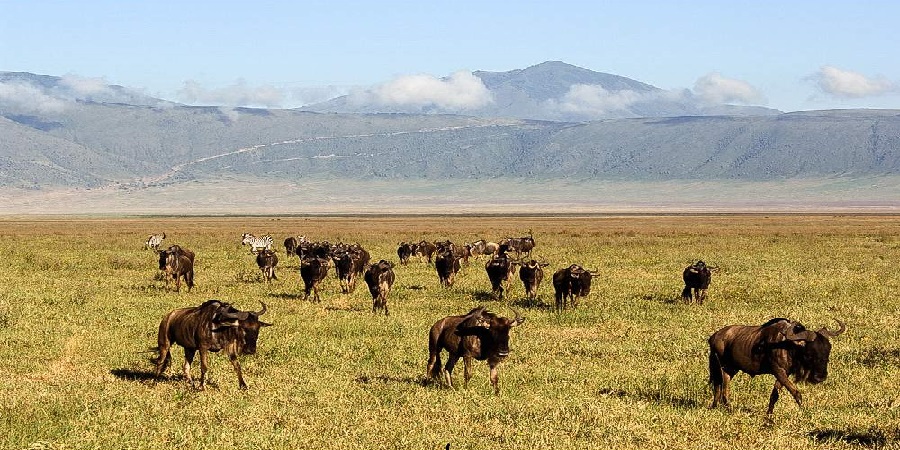
Tanzania Climate Overview
Tanzania has a tropical climate that varies across its diverse landscapes, from the humid coastlines to the cooler highlands. The country experiences two dry seasons and two rainy seasons each year, shaping the travel experience for visitors. The long dry season runs from June to October, offering sunny days, little rainfall, and excellent conditions for safaris and trekking. From November to December, the short rains bring light showers, often in the afternoon or evening, without major disruptions to travel plans. The green season between January and March is hot, lush, and perfect for photography and birdwatching. Finally, the long rains in April and May bring heavier downpours, fewer tourists, and lower travel costs, making it a quiet but rewarding time to visit.
Long Dry Season (June–October)
The long dry season is the most popular time to visit Tanzania, especially for those seeking unforgettable safari adventures. Running from June to October, this period offers clear skies, sunny days, and minimal rainfall, creating perfect conditions for wildlife viewing. Animals gather around rivers and waterholes, making them easier to spot in national parks such as the Serengeti, Tarangire, and Ruaha. It’s also the peak season for the dramatic Great Wildebeest Migration river crossings. For trekkers, this season provides the best opportunity to climb Mount Kilimanjaro with dry trails and stable weather. However, since it’s peak season, expect higher prices and larger crowds in popular destinations.
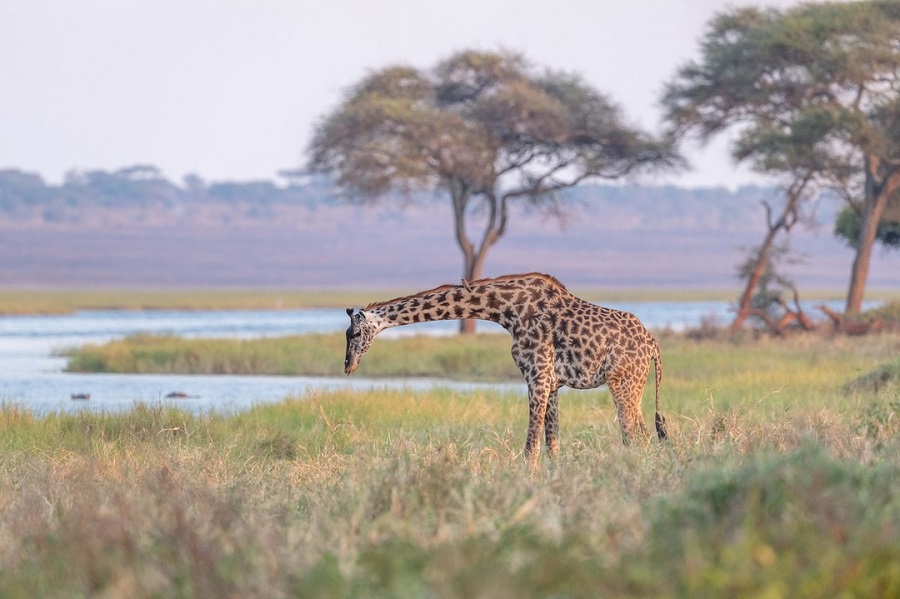
Short Rains (November–December)
The short rains occur from November to December and bring quick, light showers, often in the afternoons or evenings. These rains are generally refreshing rather than disruptive, allowing travelers to continue enjoying game drives, cultural tours, and beach holidays. The landscapes turn green and vibrant, creating beautiful settings for photography and birdwatching. Wildlife remains active, with plenty of opportunities to spot big cats and elephants in northern parks like Serengeti and Ngorongoro. This season is also great for those who prefer fewer tourists compared to the busy dry months. Overall, it’s a rewarding time to travel with a good balance of weather, wildlife, and value.
Green Season (January–March)
The green season, stretching from January to March, is hot and lush, bringing Tanzania to life with rich colors and dramatic skies. This is the best time for photography, as the landscapes are vibrant and filled with newborn animals. In the southern Serengeti, the wildebeest calving season takes place, drawing predators like lions and cheetahs for thrilling safari encounters. Birdwatchers also enjoy this time, as migratory species fill the skies with movement and song. The warm climate makes Zanzibar and the coast ideal for swimming, snorkeling, and diving. While the humidity can be high, the reward is a stunning natural experience with fewer crowds than peak season.
Long Rains (April–May)
The long rains fall between April and May, marking Tanzania’s wettest season. Heavy downpours are common, often lasting for several hours a day, which can make road travel and game drives more challenging. Many safari lodges in remote areas close during this time, especially in the southern and western circuits. However, this season also brings advantages—landscapes are lush and green, sunsets are breathtaking, and birdlife is abundant. It’s also the best season for budget travelers, as accommodation rates are significantly lower and parks are far less crowded. For those who don’t mind the rain, this period offers a peaceful and intimate way to experience Tanzania.
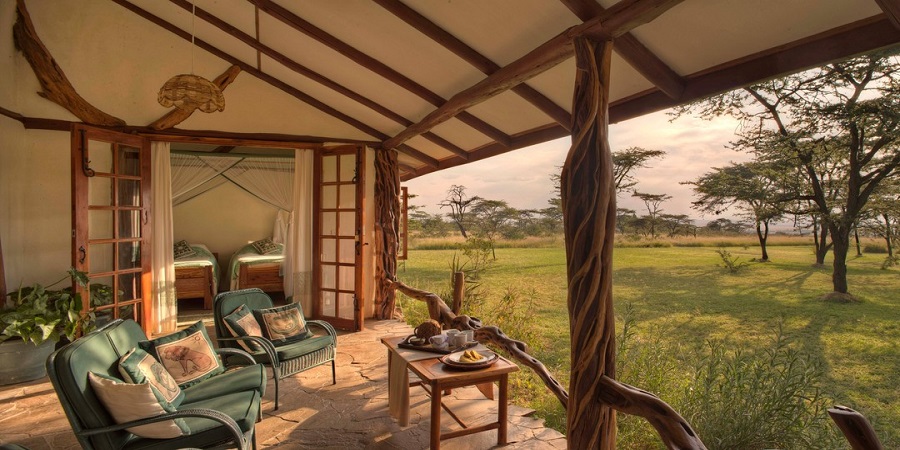
Best Time for a Safari in Tanzania 2026-2027
The best time for a safari in Tanzania 2026-2027 is during the long dry season from June to October, when animals gather around rivers and watering holes, making wildlife spotting easier. This is also when the Great Wildebeest Migration reaches the Serengeti, offering thrilling river crossings and predator encounters. January and February are ideal for the calving season in the southern Serengeti, providing dramatic wildlife moments. Even during the short rains of November and December, safaris are still possible with fewer tourists and greener landscapes. The green season from January to March provides excellent opportunities for photography and birdwatching. Overall, timing your safari correctly ensures the best chance to witness Tanzania’s incredible biodiversity in comfort.
June–October: Best Safari Season
From June to October, Tanzania enters its long dry season, making it the ultimate period for wildlife safaris. Animals concentrate around rivers and waterholes, creating prime opportunities to spot lions, elephants, giraffes, and other iconic species. This season also coincides with the Great Wildebeest Migration, with spectacular river crossings in the Serengeti attracting photographers and wildlife enthusiasts from around the world. The weather is dry and sunny, ideal for extended game drives and outdoor activities. Clear skies also make it perfect for photographing the savannah landscapes. As a result, this period is considered the peak safari season, offering unforgettable wildlife encounters.
January–February: Calving Season in Southern Serengeti
The months of January and February mark the calving season in the southern Serengeti, where thousands of wildebeest give birth. This natural phenomenon draws predators such as lions, cheetahs, and hyenas, providing dramatic safari moments. The green landscapes make for stunning photography and add vibrancy to your safari experience. Temperatures are warm but generally comfortable, particularly in the early mornings and evenings. Birdwatchers also enjoy this season, as migratory species are abundant. With fewer tourists than the peak dry season, it’s an ideal time for intimate wildlife encounters.
March–May: Green Landscapes and Fewer Crowds
Between March and May, Tanzania experiences the green season, characterized by lush landscapes and vibrant vegetation. While this period brings heavier rainfall, it also creates dramatic backdrops for photography and abundant birdlife. National parks are quieter, offering more peaceful safari experiences with fewer crowds. The rains enhance the growth of the savannah and forests, attracting herbivores and other wildlife in full force. Although some roads may be slippery, wildlife viewing remains excellent in many northern and central parks. Travelers seeking a combination of affordability, tranquility, and vibrant scenery will find this season particularly rewarding.
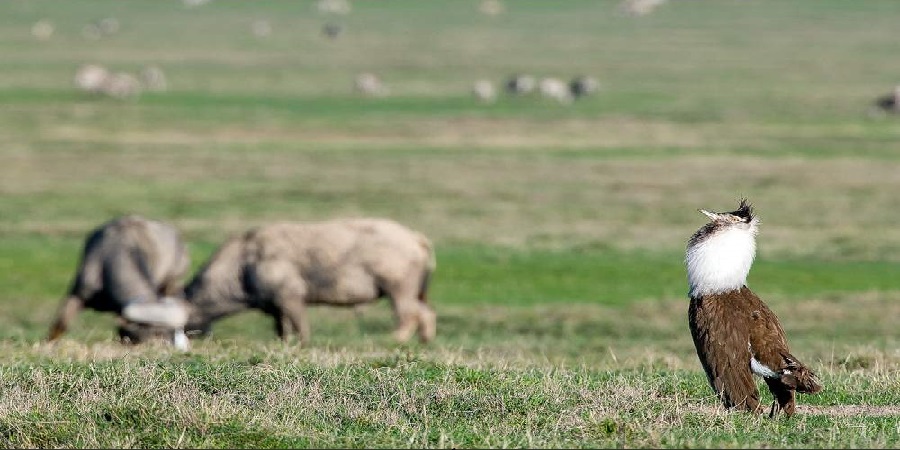
Tanzania Safari: Recommended Departure Dates 2026–2027
| Month |
Recommendation |
Book Now |
| January |
Excellent (wildebeest calving in Serengeti; green landscapes) |
Book |
| February |
Excellent (peak calving; fewer crowds than dry season) |
Book |
| March |
Average (start of rains; lush but unpredictable) |
Book |
| April |
Poor (heavy long rains; roads may flood) |
Book |
| May |
Poor (end of long rains; very green but quiet) |
Book |
| June |
Excellent (dry start; migration northbound) |
Book |
| July |
Excellent (peak dry; Mara River crossings) |
Book |
| August |
Excellent (optimal wildlife viewing; short grass) |
Book |
| September |
Excellent (migration in north; low crowds) |
Book |
| October |
Good (end of dry; possible short rains) |
Book |
| November |
Average (short rains; budget-friendly) |
Book |
| December |
Good (warming up; migration south) |
Book |
Best Time to Climb Mount Kilimanjaro 2026-2027
The best time to climb Mount Kilimanjaro is during the dry seasons, from January to March and June to October, when trails are stable and skies are clear. These periods offer cooler temperatures in the mornings and evenings, making the ascent more comfortable and safer. Avoid the long rains in April and May, as trails can become slippery and visibility may be limited. Climbing during the dry season also increases the chances of breathtaking summit views and stunning sunrise photography. Kilimanjaro trekkers can enjoy a variety of routes, each showcasing unique landscapes from rainforest to alpine desert. Timing your climb carefully ensures a memorable and successful adventure on Africa’s highest peak.
January–March: Quieter Trails and Clear Skies
The months of January to March are among the best times to climb Mount Kilimanjaro for those who prefer quieter trails. The weather is generally stable, with clear skies in the mornings that offer breathtaking sunrise views from the slopes. Temperatures are cooler at higher altitudes, making the climb more comfortable and reducing the risk of heat-related fatigue. This period avoids the heavy rains of April and May, keeping trails safer and less slippery. Wildlife and scenic landscapes along the trek are vibrant after the short rains, providing excellent opportunities for photography. Fewer tourists on the trails also mean a more peaceful and personalized trekking experience.
June–October: Peak Trekking Season
From June to October, Kilimanjaro enters its peak trekking season, attracting climbers from around the world. Trails are dry and firm, reducing the chances of slips or delays caused by mud, while mornings and evenings are generally crisp and clear. This season provides the highest probability of summit success, with minimal rainfall and stable weather conditions. The dry trails also make it easier to enjoy the diverse landscapes, from rainforest to alpine desert zones. Wildlife and birds are more visible in the lower regions, adding to the experience. Due to high demand, climbers are advised to book accommodations and guides well in advance to secure spots.
April–May Not Best Time: Muddy Trails and Lower Visibility
Climbers are generally advised to avoid April and May, as these months mark the long rainy season on Mount Kilimanjaro. Trails can become extremely muddy and slippery, increasing the risk of accidents during the ascent. Visibility is often reduced due to clouds and persistent rainfall, limiting views of the surrounding landscapes and summit sunrise. Rivers and streams may swell, making some routes more difficult to navigate. Lodges and trekking services in certain areas may also reduce operations during this period. While the scenery is lush and green, the challenging weather makes these months less ideal for those aiming for a safe and successful climb.
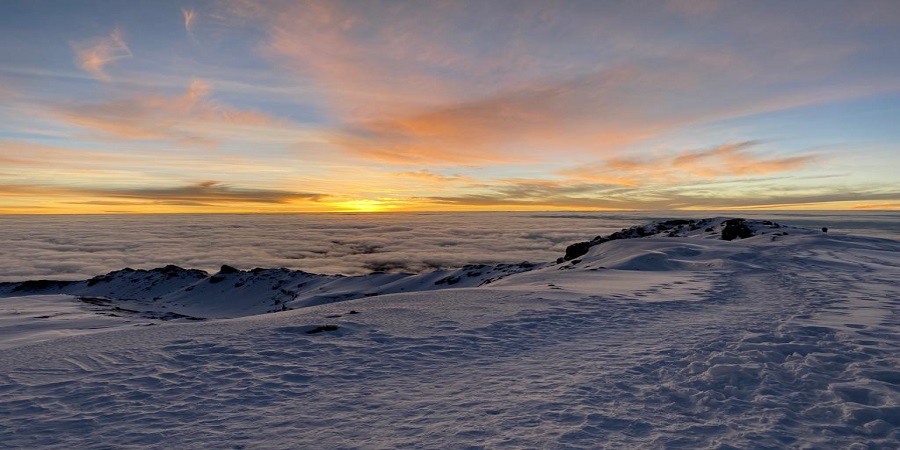
Climbing Kilimanjaro: Recommended Departure Dates 2026–2027
| Month |
Recommendation |
Book Now |
| January |
Excellent (warm, clear skies; high success rate) |
Book |
| February |
Excellent (warmest month; ideal for beginners) |
Book |
| March |
Good (early month dry; avoid late rains) |
Book |
| April |
Poor (wet, slippery trails; low visibility) |
Book |
| May |
Poor (muddy conditions; not recommended) |
Book |
| June |
Good (cooler, dry; fewer crowds than July) |
Book |
| July |
Excellent (dry, clear; busy but prime views) |
Book |
| August |
Excellent (cold nights but dry trails) |
Book |
| September |
Excellent (warm, dry; high success rates) |
Book |
| October |
Excellent (warm, dry; shoulder season value) |
Book |
| November |
Average (brief showers; avoid if possible) |
Book |
| December |
Good (late month dry; festive but busy) |
Book |
Best Time for Zanzibar & Coastal Tanzania
The best time to visit Zanzibar and Tanzania’s coastal regions is during the dry months from June to October and December to February, when the weather is sunny, warm, and ideal for swimming, snorkeling, and diving. These periods offer calm seas, clear skies, and minimal rainfall, perfect for beach holidays or exploring the islands. Even during the short rains in November, showers are usually brief and won’t disrupt travel plans. The dry seasons also provide excellent conditions for watersports and island-hopping adventures. Coastal temperatures are consistently warm, making it comfortable for all-day excursions. Choosing the right season ensures you experience Tanzania’s stunning beaches at their very best.
December–February: Hot and Sunny for Diving and Snorkeling
From December to February, Zanzibar enjoys hot and sunny weather, making it ideal for beach holidays and watersports. The seas are calm and clear, providing perfect conditions for diving, snorkeling, and swimming among vibrant coral reefs. Coastal breezes help balance the warmth, making daytime exploration comfortable. This season is also perfect for photography, with turquoise waters and white sandy beaches creating stunning scenery. Hotels and resorts are fully operational, offering all amenities for travelers. It’s a great time to enjoy island-hopping adventures or relax on Zanzibar’s world-famous beaches.
June–October: Perfect Beach Season
The period from June to October is considered Zanzibar’s perfect beach season, with sunny skies and gentle coastal breezes. Rainfall is minimal, ensuring uninterrupted days for swimming, sunbathing, or exploring the island. This season is excellent for outdoor activities such as boat trips, fishing, and dolphin spotting. The weather also makes it comfortable to combine beach days with excursions to Stone Town or spice farms. Wildlife and marine life are more visible in the clear waters, ideal for snorkeling and diving. These months are particularly popular with tourists, so early booking for accommodation is recommended.
April–May: Rainy Season and Resort Closures
During April and May, Zanzibar experiences its long rainy season, with heavy showers that can last for several hours each day. Some resorts and hotels may temporarily close for maintenance during this period. Outdoor activities such as beach excursions or snorkeling can be disrupted by sudden downpours. However, the island becomes lush and green, offering vibrant landscapes for photography and a quieter, more peaceful atmosphere. Travel during these months is often more affordable, with lower prices on accommodations and tours. While not ideal for sun-seekers, the rainy season provides a unique perspective on Zanzibar’s natural beauty and culture.
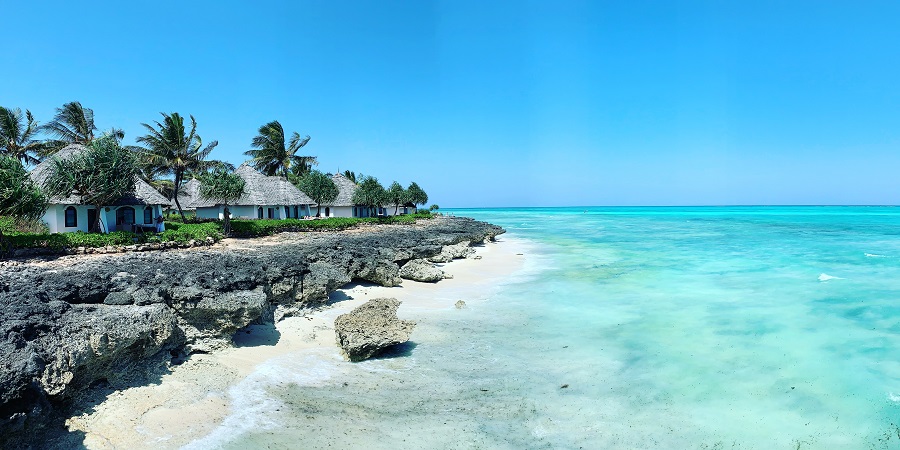
Zanzibar: Recommended Departure Dates 2026–2027
| Month |
Recommendation |
Book Now |
| January |
Excellent (hot, dry; clear waters for diving) |
Book |
| February |
Excellent (sunny, hot; best for whale shark spotting) |
Book |
| March |
Average (hot, variable; short rains begin) |
Book |
| April |
Poor (peak rains; many activities disrupted) |
Book |
| May |
Poor (heavy showers; high humidity) |
Book |
| June |
Excellent (cool, dry; perfect for beaches) |
Book |
| July |
Excellent (breezy, dry; great for snorkeling) |
Book |
| August |
Excellent (driest month; turtle hatchings) |
Book |
| September |
Excellent (clear seas; ideal diving) |
Book |
| October |
Good (warm, occasional showers; fewer tourists) |
Book |
| November |
Average (short rains; still sunny spells) |
Book |
| December |
Good (hot, humid; holiday crowds) |
Book |
Cyclone Season in Tanzania
While cyclones are rare in Tanzania, the southeastern coastal regions, including Lindi and Mtwara, can occasionally experience tropical storms between December and April. Travelers planning to visit these areas during this period should stay updated with local weather alerts to ensure safety. Although cyclones are uncommon, sudden heavy rainfall and strong winds can occasionally disrupt travel plans. Most of Tanzania remains unaffected, so inland safaris and northern parks are usually safe to visit. Precautions include flexible itineraries, checking forecasts, and following local advice. By staying informed, visitors can still enjoy a safe and memorable Tanzanian holiday even during this period.
Tanzania by Month: A Complete Travel Calendar 2026-2027
A complete travel calendar 2026-2027 for Tanzania highlights the best times to explore the country’s wildlife, mountains, and beaches throughout the year. From the lush green landscapes of January to March to the dry, animal-rich months of June to October, each month offers unique experiences. Travelers can plan safaris, Kilimanjaro climbs, island adventures in Zanzibar, and cultural tours according to seasonal conditions. Festivals, bird migrations, and marine wildlife events are spread across the year, making every visit memorable. Understanding Tanzania’s month-by-month climate and activities helps optimize your travel itinerary. This guide ensures you experience the best of Tanzania, whether seeking wildlife, adventure, or coastal relaxation.
January – Photography & Kilimanjaro Climbs
January in Tanzania is hot and humid, with temperatures ranging from 26°C to 30°C, making it ideal for photography and capturing lush, green landscapes. This month is also perfect for climbing Mount Kilimanjaro, as trails are clear and visibility is excellent. Safari enthusiasts can witness the wildebeest calving season in the southern Serengeti, offering dramatic predator-prey encounters. Birdwatchers will enjoy spotting migratory species returning after the rains. Coastal areas like Zanzibar are warm and sunny, perfect for swimming and beach escapes. Overall, January provides a rich combination of wildlife, adventure, and natural beauty.
February – Island Hopping & Snorkeling
February brings warm and sunny weather with occasional evening showers, creating perfect conditions for island hopping and snorkeling along Tanzania’s coast. Zanzibar, Mafia Island, and Pemba offer turquoise waters and pristine beaches ideal for swimming and diving. Wildlife in national parks remains active, and the southern Serengeti continues to showcase the calving season. Photography enthusiasts will find vibrant landscapes and colorful birdlife throughout the country. Kilimanjaro climbs remain favorable with clear skies in the mornings. Travelers enjoy fewer crowds compared to peak safari months, making February both scenic and peaceful.
March – Birdwatching & National Parks
March in Tanzania is characterized by hotter temperatures, often reaching up to 34°C, with increased rainfall that nourishes the green landscapes. This month is excellent for birdwatching, as migratory species fill the skies and forests. National parks like Tarangire, Serengeti, and Lake Manyara remain accessible for safaris, though some roads may be slippery. March also hosts Easter festivities, offering cultural experiences for travelers. Kilimanjaro trekking is still possible but requires preparation for humid conditions. Photographers can capture the vibrant scenery enhanced by occasional showers and dramatic skies.
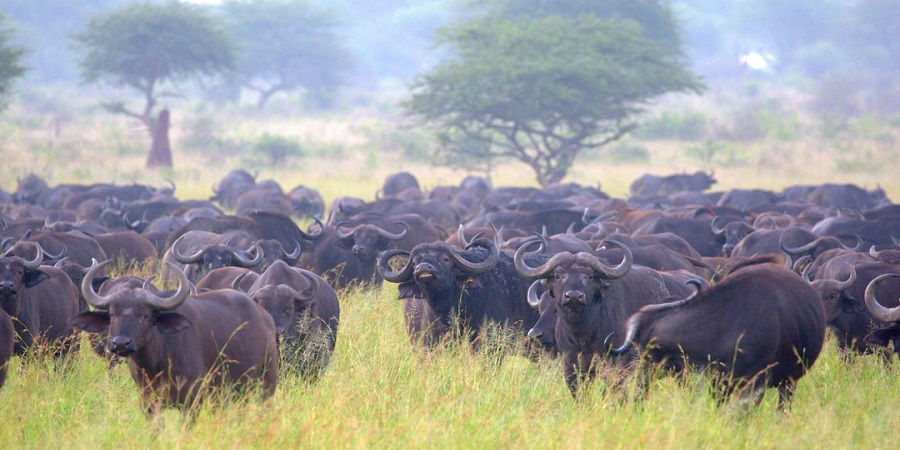
April – Rainy Season & Sunset Views
April marks the long rainy season, with frequent showers transforming Tanzania’s landscapes into lush, vibrant scenery. It’s an ideal month for witnessing breathtaking sunsets and exploring UNESCO World Heritage sites without the crowds. National parks are quieter, offering more intimate safari experiences, although some roads may be muddy. Coastal areas like Zanzibar receive rainfall but still allow for occasional beach excursions. Photography enthusiasts will find vivid colors and reflective landscapes perfect for creative shots. Museums and cultural sites are excellent for indoor activities during brief rain interruptions.
May – Birdwatching & Peaceful Escapes
May is the tail end of the rainy season, providing lush green landscapes and abundant wildlife in Tanzania. It’s a great time for birdwatching, particularly in the Usambara Mountains and wetlands, where vibrant species abound. National parks are quieter, offering a peaceful safari experience away from peak season crowds. Kilimanjaro climbs are less recommended due to muddy trails and lower visibility. The scenery along safari routes and in the highlands is exceptionally photogenic. Travelers seeking tranquility, fewer tourists, and vibrant natural beauty will find May particularly rewarding.
June – Safaris & Festivals
June marks the beginning of Tanzania’s long dry season, with minimal rainfall and comfortable temperatures around 25°C–30°C. This month is ideal for safaris, as animals gather around waterholes, making wildlife viewing easier and more predictable. Festivals in northern regions and Zanzibar provide cultural highlights for travelers. Climbing Mount Meru and trekking Kilimanjaro are excellent in June due to stable trails and clear skies. Photographers benefit from bright landscapes and abundant wildlife activity. June offers a combination of adventure, wildlife, and cultural experiences, making it a top travel month.
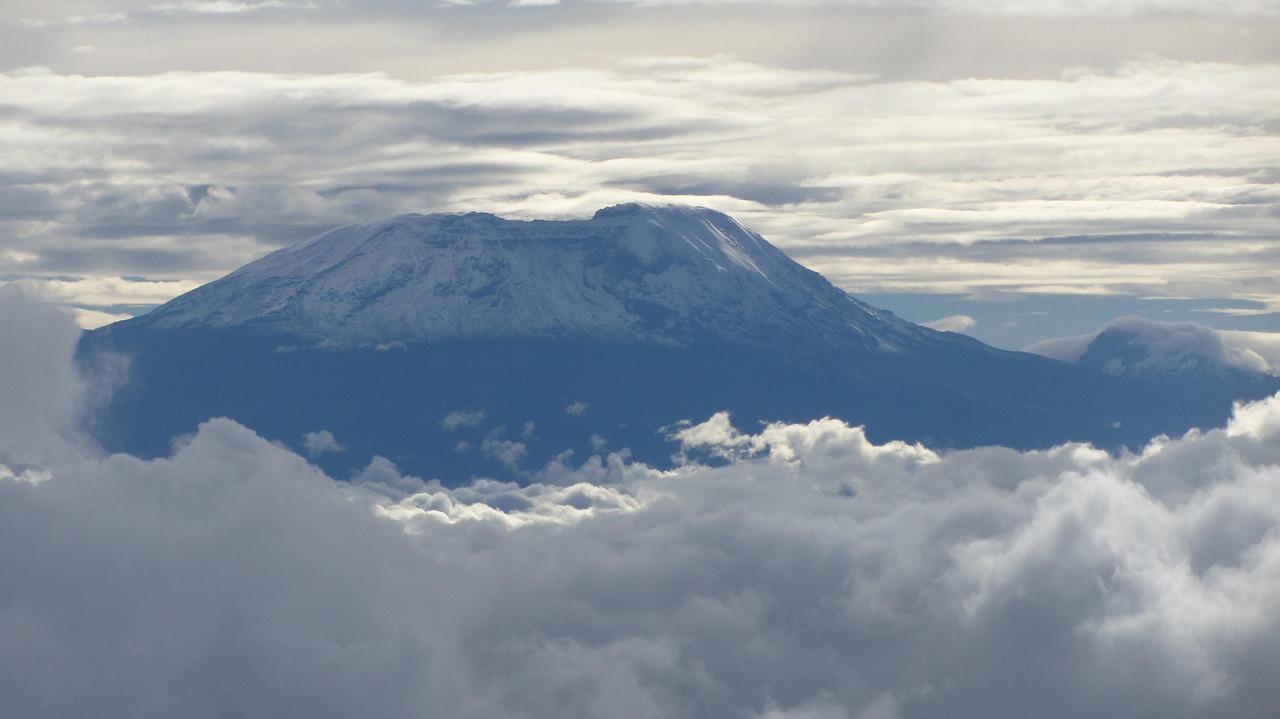
July – The Great Migration & Zanzibar Beaches
July is a prime month for witnessing the Great Wildebeest Migration in Tanzania, with spectacular river crossings in the Serengeti attracting safari enthusiasts. Temperatures are comfortable, ranging from 25°C–30°C, and rainfall is minimal, ideal for outdoor adventures. Zanzibar and coastal regions are perfect for beach holidays, sunbathing, and swimming. Wildlife viewing is at its peak, with lions, leopards, elephants, and giraffes highly visible in national parks. Festivals in Zanzibar add cultural richness to the trip. This combination of wildlife spectacle and coastal relaxation makes July one of Tanzania’s most popular travel months.
August – Diving & Turtle Hatching
August offers warm, dry weather with low humidity, making it ideal for diving, snorkeling, and marine wildlife spotting around Zanzibar and Mafia Island. It’s also the season when baby turtles hatch along Tanzania’s coast, offering a unique wildlife experience. Safari conditions are excellent, particularly in Ruaha, Western Serengeti, and northern parks, with wildlife congregating near water sources. Clear skies and pleasant temperatures make trekking and sightseeing comfortable. Photographers can capture both coastal and inland landscapes in optimal lighting. August combines wildlife, marine adventures, and beach leisure, perfect for a diverse Tanzanian itinerary.
September – Hiking & Hot Air Ballooning
September is an excellent month for hiking and climbing Kilimanjaro, with moderate temperatures and clear skies enhancing the trekking experience. Hot air balloon safaris over the Serengeti provide breathtaking aerial views of wildlife and landscapes. Coastal areas and Zanzibar remain dry, ideal for beach relaxation and water sports. Wildlife is abundant in national parks, as animals continue to gather around waterholes. This month also offers a quieter travel experience compared to peak safari season. Photography opportunities abound, with vibrant landscapes and golden light for morning and evening shoots.
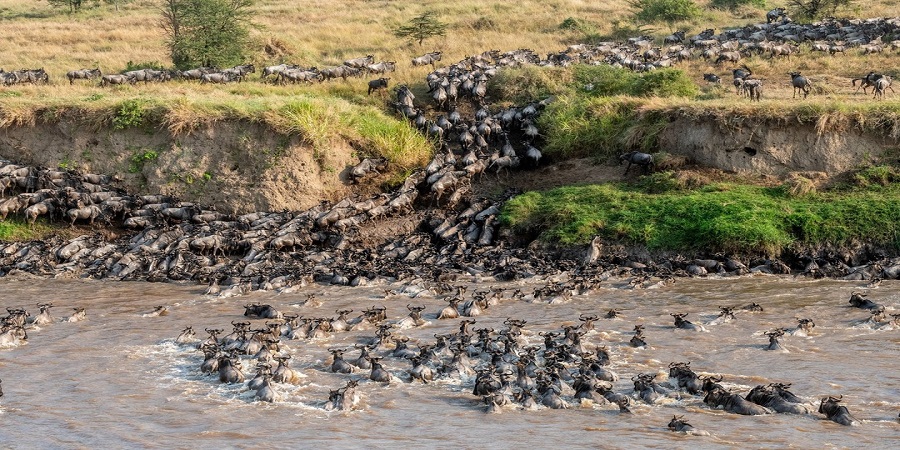
October – Ngorongoro Crater & City Tours
October brings variable weather with occasional rainfall, but it remains an excellent month for visiting Ngorongoro Crater and northern national parks. Wildlife is still abundant, and the green landscapes provide scenic photography backdrops. Safari conditions remain favorable, although some roads may be softer after rain. City tours in Arusha and cultural visits to markets and villages are ideal during this period. Coastal regions enjoy sunny spells, making Zanzibar excursions possible. Travelers seeking a balance of wildlife, culture, and slightly fewer crowds will find October rewarding.
November – Whale Sharks & Music Festivals
In November, Tanzania experiences short rains, usually in the afternoons or evenings, with plenty of sunny hours for exploration. This is the best month for spotting whale sharks in Mafia Island and engaging in water activities. Safari conditions in northern parks remain good, and wildlife continues to be active. Music festivals and cultural events across the country provide unique experiences for travelers. Coastal waters are ideal for diving, snorkeling, and island exploration. November offers a combination of wildlife, cultural immersion, and marine adventures for travelers seeking variety.
December – Birds, Culture & Christmas Celebrations
December is festive, with early rains tapering off and travelers arriving for Christmas celebrations across Tanzania. Birdwatchers can witness migrations at Ndutu and Ngorongoro, while safari opportunities remain excellent in northern parks. Coastal regions and Zanzibar offer warm, sunny conditions for beach holidays and water sports. Cultural experiences, local markets, and holiday festivities add richness to the trip. Kilimanjaro climbs are still feasible, particularly in the early part of the month. December blends wildlife, cultural events, and festive cheer, making it a memorable month to visit Tanzania.

So, when is the best time to visit Tanzania?
The best time to visit Tanzania depends on the experiences you seek, from safaris and the Great Migration in June to October to witnessing the dramatic wildebeest calving season in January and February. Beach lovers and diving enthusiasts should plan trips for December to February or June to October, when coastal waters are calm and sunny. Budget travelers can enjoy the green season in April and May, benefiting from fewer crowds and lower accommodation rates despite occasional rainfall. Tanzania’s diverse climate ensures there is something for every traveler year-round. Proper planning based on seasonal highlights guarantees an unforgettable wildlife, mountain, and coastal adventure. By choosing the right time, visitors can maximize their Tanzania experience while capturing stunning scenery and wildlife moments. No matter when you go, Tanzania offers breathtaking wildlife, landscapes, and cultural experiences all year round.
